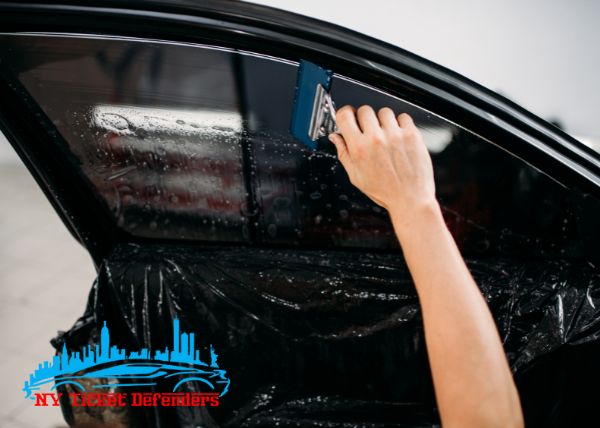Exactly How Vehicle Window Tinting Can Enhance the Resale Worth of Your Auto
Exactly How Vehicle Window Tinting Can Enhance the Resale Worth of Your Auto
Blog Article
Home Window Tinting Rules and Standards: What You Need to Know Prior To Tinting Your Cars And Truck
Before proceeding with window tinting for your vehicle, it is important to familiarize yourself with the diverse laws and standards that govern this method throughout different states. These guidelines determine the permitted degrees of tint darkness, usually determined by noticeable light transmission (VLT) percentages, and consist of details stipulations for front windscreens aimed at making certain road security.
Overview of Window Tinting Laws
Window tinting regulations are frequently subject to variation throughout various jurisdictions, mirroring neighborhood regulations and security factors to consider. These legislations determine the allowable levels of tint darkness and reflectiveness on car windows, making certain that drivers maintain ample exposure while also safeguarding versus hazardous UV rays and warmth.
A lot of regulations classify home window tinting based on the Visible Light Transmission (VLT) percent, which indicates the amount of light that can go through the home window. Generally, lower VLT portions signify darker colors. Legislations commonly separate between the front, side, and rear windows, with stricter limitations put on the front windscreen to improve security for both the chauffeur and various other roadway users.
Compliance with window tinting guidelines is essential, as infractions can result in fines, mandatory removal of the color, and potential increases in insurance coverage premiums. It is necessary for lorry proprietors to familiarize themselves with regional laws prior to continuing with window tinting setups.
State-by-State Tint Laws
Recognizing the specific home window tinting guidelines in each state is vital for car proprietors looking for to comply with the regulation. Each state in the united state has actually developed its very own collection of policies controling home window tinting, which can vary considerably. These regulations typically determine the allowed levels of tint darkness, the kinds of home windows that can be tinted, and any kind of clinical exceptions that might use.
For circumstances, states like The golden state have rigid limitations on tint darkness for front windows, while others, such as New Mexico, may allow darker tints. In addition, particular states mandate details visibility percentages for different windows, consisting of the windscreen, front side windows, and rear home windows. It is critical for auto proprietors to familiarize themselves with their state's legislations to prevent potential penalties or fines.
Additionally, some states may call for an accreditation sticker label to be positioned on tinted windows, showing conformity with state legislations. Failure to follow these guidelines not just risks legal effects however can additionally affect safety and security and presence while driving. Automobile proprietors need to carry out complete study or consult regional authorities to make sure complete understanding and compliance with state-by-state color guidelines.
Allowed Tint Kinds and degrees
Several vehicle owners might be surprised to find out that permitted color levels and kinds differ widely throughout various states. Each state has developed its very own policies concerning the allowable darkness and reflectivity of home window tint, often gauged by Visible Light Transmission (VLT) percents. VLT describes the amount of light that can go through the tinted windows; therefore, a lower portion shows a darker color.

Furthermore, the types of color products permitted can vary, with some states prohibiting mirror-like or metal finishes. It is vital for automobile owners to acquaint themselves with their state's certain regulations to make sure compliance. Non-compliance can result in fines, mandatory elimination of the tint, or other lawful repercussions, making it vital to comprehend these guidelines prior to waging installment.
Medical Exceptions for Tinting
While not all states give allowances for clinical exceptions concerning home window tinting, those that do recognize the need for certain people to boost exposure and convenience due to medical problems. Different clinical conditions, such as lupus, skin cancer cells, and certain eye problems, can provide individuals especially delicate to sunlight. Consequently, these people might call for darker tints to secure themselves from damaging UV rays and glow.

It is essential to keep in mind that even with a clinical exception, there may still be constraints on the level of tint allowed. Compliance with state laws guarantees that individuals are both protected and within lawful restrictions. Those taking into consideration medical exemptions need to contact their regional Division of Motor Cars or equal authority to understand the treatments and needs needed to obtain an exception effectively.
Fines for Non-Compliance
Stopping working to comply with home window tinting laws can bring about considerable fines, which differ by state. Police are empowered to release citations for automobiles that do not stick to the specified tinting guidelines. These Visit Website charges typically include fines, which can range from moderate total up to a number of hundred bucks, depending upon the extent of the infraction and the state in question.
In some jurisdictions, repeated offenses may lead to escalating fines or added penalties, such as mandatory court appearances. Non-compliance may demand the find more information elimination of prohibited tinting, usually at the owner's cost. In severe situations, regular culprits might face suspension of their lorry registration up until conformity is attained.
Furthermore, insurance policy implications might arise from receiving numerous citations for home window tint offenses. Insurance firms may check out such violations as a sign of riskier habits, potentially causing enhanced costs or difficulty in protection.
To stay clear of these fines, it is important for automobile proprietors to acquaint themselves with their regional home window tinting legislations and make sure that their vehicle complies (Window Tinting). This proactive technique not just prevents lawful implications yet additionally advertises road safety
Conclusion

The majority of guidelines classify window tinting based on the Visible Light Transmission (VLT) portion, which suggests the quantity of light that can pass through the home window. Conformity with home window tinting guidelines is crucial, as violations can result in penalties, necessary elimination of the color, and possible boosts in insurance coverage costs.Recognizing the details window tinting laws in each state is crucial for lorry owners seeking to abide with the legislation. These guidelines usually dictate the permitted levels of color darkness, the types of windows that can be tinted, and any type of clinical exemptions that may apply.
For instance, states like The golden state have you can find out more strict limitations on color darkness for front windows, while others, such as New Mexico, might enable darker colors.
Report this page